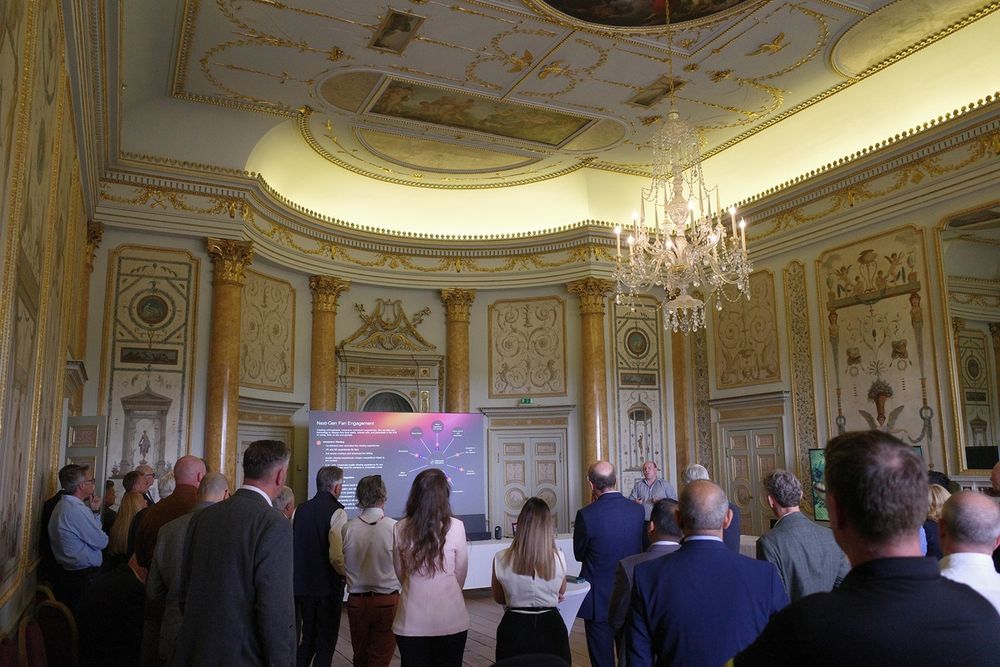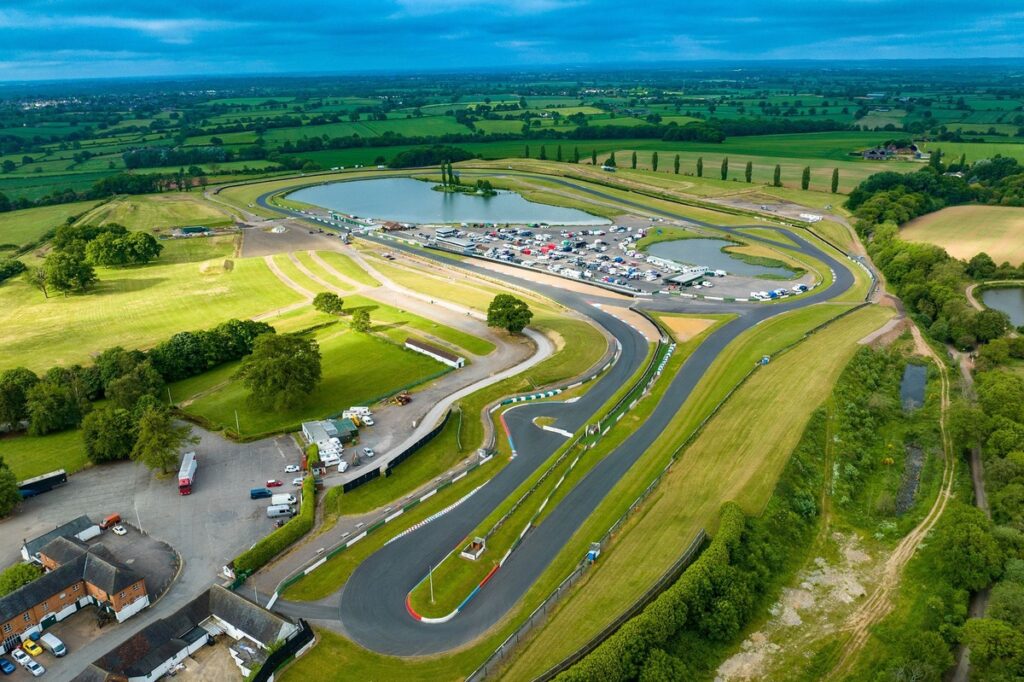At the opulent Stowe House, located just outside Silverstone Circuit, a select group of motorsport insiders, technology leaders, and circuit representatives recently gathered for an unveiling that may shape the future of racing.
The event marked a significant milestone for Infrared Kinetics (IRK), a British startup that believes it has solved motorsport’s most persistent and polarising problem: track limits.
But as IRK’s Chief Technology Officer Scott Page demonstrated, this innovation is just the start. Powered by a real-time infrared tracking system with centimetre-level precision, the company’s platform offers far-reaching applications that could revolutionise not only race control but also gaming, fan engagement, and commercial operations across motorsport.
Cracking the code of track limits
Track limits have become one of the most contentious issues in race regulation — especially in Formula 1 — due to expansive asphalt run-off areas that encourage drivers to push boundaries, making consistent and accurate enforcement increasingly difficult.
IRK’s system, however, offers live, highly accurate positional updates — up to 100 times per second and within 5 centimetres — regardless of weather.
“The problem with GPS is, sometimes it works, sometimes it doesn’t. You’re relying on a whole bunch of things that are not in your control,” Page explained. “You’re relying on a constellation of satellites that are up in space, the weather, the position of buildings and all these kinds of things.
“So at IRK, we don’t rely on things that aren’t in our control. Instead, we prefer a local, very carefully managed sensing capability, using these infrared lights. We’ve tested it in thick fog at Mallory Park, and the IRK system using infrared cut straight through the fog and knew precisely where all the cars were at any given point in time. Infrared just simply isn’t vulnerable to many of the things that cause problems for other kinds of systems that are used around sports.”
By installing low-power infrared beacons on vehicles and using cameras placed around a circuit, IRK creates an ultra-reliable localised tracking network. The result: instant detection of track limit breaches and the potential to automate regulatory decisions in real time.
Max Verstappen, Red Bull Racing
Photo by: Sam Bagnall / Motorsport Images via Getty Images
While there are no active discussions taking place with the FIA about introducing it in F1 at the moment, the technology is ready to deploy — even on complex street circuits.
“Hopefully there’ll be a conversation,” said IRK CEO Gillian Switalski. “I think the most important thing is we needed to demonstrate that we could solve the track limits problem, before Formula 1 would talk to us. And now we’ve demonstrated that.”
From race control to revenue engine
For race organisers and track owners, the benefits of IRK’s technology extend far beyond officiating. The company envisions an ecosystem in which every lap completed on a circuit becomes monetisable data — fuel for fan engagement, simulation training, betting platforms, and even post-event analytics.
“The problem with GPS-based systems is that they’re a sunk cost — you’re not going to get anything out of it,” Switalski noted. “We’ve built something that creates revenue before, during, and after an event.”
Small and mid-sized circuits stand to benefit significantly. Through consortium-based funding models, IRK proposes allowing partners — sponsors, broadcasters, gaming platforms — to underwrite infrastructure in exchange for access to the resulting data streams.
This could breathe new financial life into grassroots racing venues, which often struggle with capital investment but remain rich in community and content potential.
Racing against reality
Perhaps the most disruptive aspect of IRK’s vision lies in its crossover with gaming and esports. During the presentation, the company demonstrated how real-world cars at Mallory Park were being tracked in real time within the popular sim racing platform Assetto Corsa. Through a live digital twin and ultra-low latency integrations, virtual drivers can now race alongside their real-world counterparts — or even against their own replays from a previous track day.

IRK exclusive reveal event at Stowe House
Photo by: Infrared Kinetics
It’s the foundation of what Dom Duhan, a veteran sim racing entrepreneur and former head of Studio 397 (rFactor 2, Le Mans Ultimate), describes as “mass participation competition”. Rather than focusing solely on elite-level competition, the idea is to let thousands — or even hundreds of thousands — of gamers interact with real-world motorsport events simultaneously.
“Imagine getting a notification on your phone two hours before a real race,” said Duhan, who recently joined IRK as Senior Strategic Advisor. “You sign up, join the event, and race against the actual cars on track. And if you get in the top 20%, you win a prize. It’s a new kind of engagement.”
Latency, a critical hurdle in most live game integrations, is already being addressed. “Everything’s going to come from the cloud, it’s very immediate”, Duhan commented. “And you make sure you sync it, so you don’t have that latency. I don’t see it as an issue.”
With the help of Dell and NVIDIA, IRK’s infrastructure is able to deliver near-instantaneous data transfer — enabling synchronised racing, ghost car challenges, and real-time coaching overlays. “We see a fantastic opportunity to give racing teams much higher quality data for driver training and development,” Page added.
The next-gen viewing experience
For fans in the stands or at home, IRK’s system unlocks a deeply personalised viewing experience. Through mixed reality platforms, smart TVs, or mobile apps, users can follow any driver from any camera angle in real time — even choosing virtual vantage points that don’t physically exist.
Think F1TV — only interactive, immersive, and community-driven. “It’s tailor-made for F1, there’s no doubt about it,” Switalski remarked. “To have it in Formula 1 would be absolutely brilliant.”
Features such as rewinding overtakes, custom overlays, fan-driven replays, and even Twitch-style chat and emoji reactions are within reach. Duhan likens it to the evolution of sports streaming: “You’re not just watching anymore; you’re in the race.”
The race start
Photo by: Kym Illman / Getty Images
A platform for transformation
Switalski is clear: this is not about incremental change. “We’re not solving one problem — we’re creating a new ecosystem. It’s about data, engagement, education, and inclusion.”
Beyond motorsport, IRK’s tracking platform has potential applications in smart cities, drone surveying, autonomous vehicles, and even next-generation logistics. But its roots — and its clearest use case — remain in racing. With backing from Dell, NVIDIA, and interest from F1 teams including McLaren and Cadillac, IRK is poised to go global.
Deployment can begin within weeks. Installation can be completed in under three months. And thanks to the compact size of the beacons and adaptability of the camera infrastructure, even street circuits are fair game.
“We can do it next week,” said Switalski. “We can put it on a circuit within three months, from start to finish. We’ve got the infrastructure to be able to roll it out globally, so we’ve got no issues with that. The most important thing for me was if it works every day and all the time, and if even someone like me could press a button and it would work. And it does do that.”
As motorsport seeks new ways to attract younger audiences, ensure consistent officiating, and expand digital revenues, IRK’s blend of precision and gamified storytelling may prove a compelling solution. From ghost cars to virtual pitwalls, the line between real and virtual racing has never been thinner.
In this article
Be the first to know and subscribe for real-time news email updates on these topics
Read the full article here

